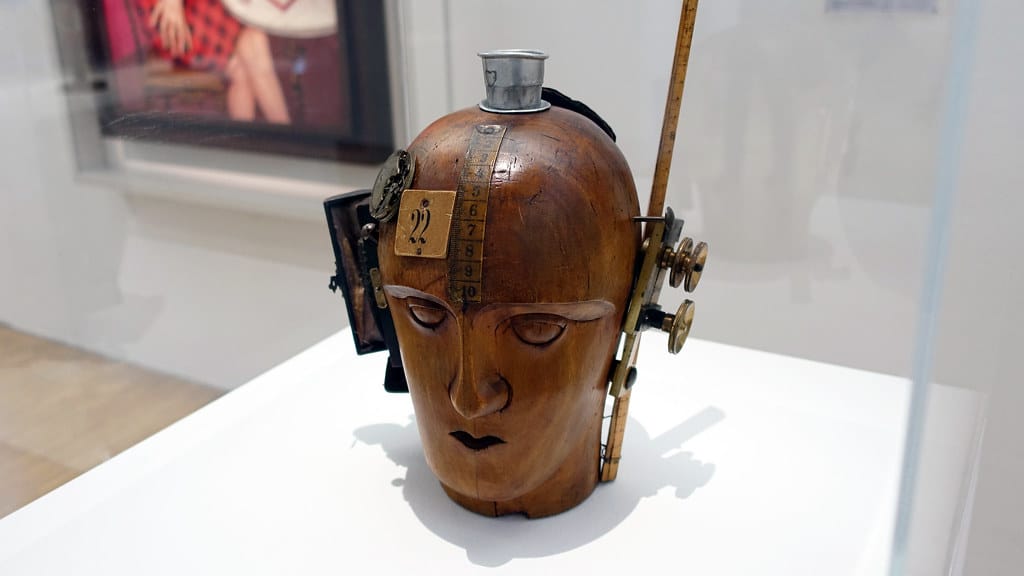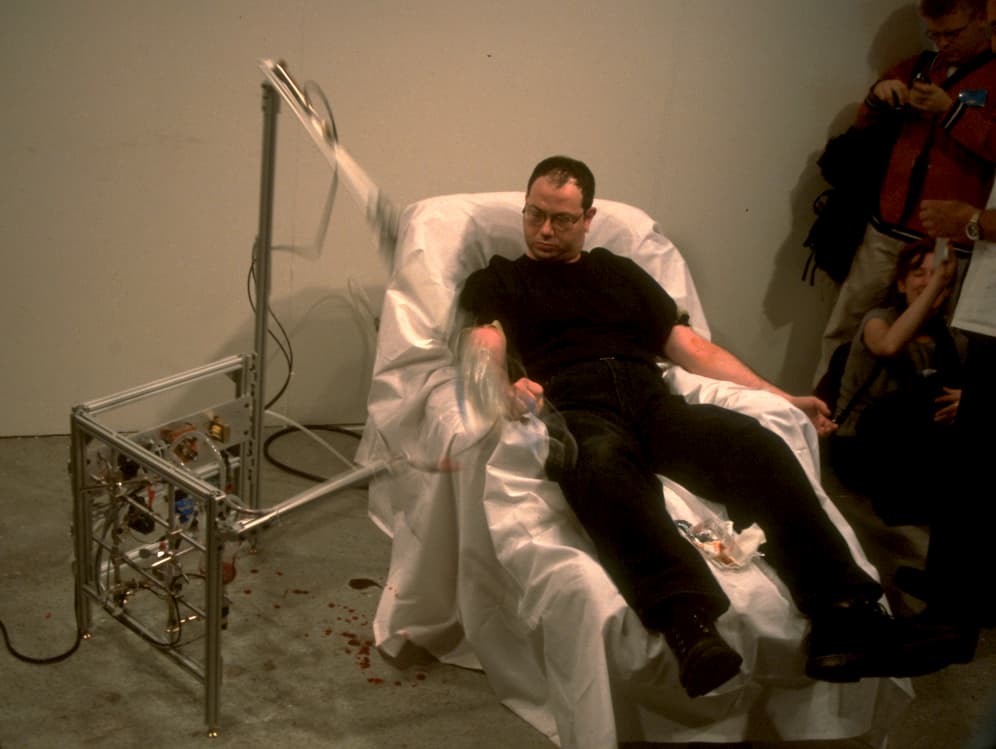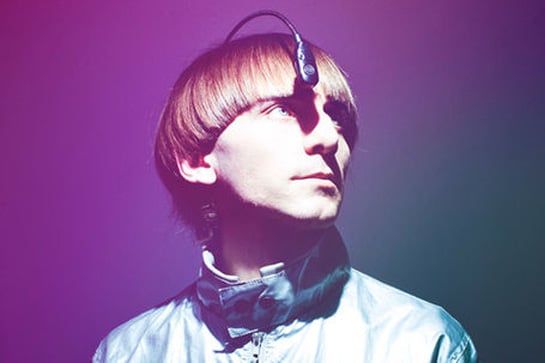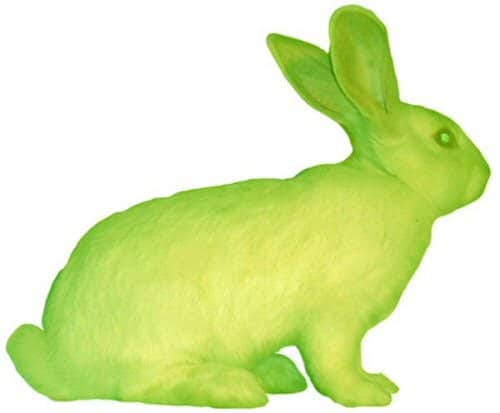




Associated curator
Teacher / Curator
Claire Luna completed her studies in modern and contemporary art history at Sorbonne Paris IV and is now an art critic and independent curator. She’s a contributor at several art magazines in France (Artpress, Le quotidien de l'art, La revue du Collège de France) and abroad (Artealdia) and is interested in non-Western scenes. Her most recent exhibitions have focused on contemporary creation in Latin America.
Fiction incarnate
As an artist, is it possible to do anything other than produce fiction? A history of art could thus focus exclusively on the way that art is at play with, or, is a play on, reality. But what happens when art has an impact on life itself and on the life stories of its creators? Creative acts, particularly over the past few decades, have dealt with the way artists can transform and up-end reality, sometimes influencing them even deep into their bones. Peut-on, lorsqu’on est artiste, faire autre chose que de créer des fictions ? Une histoire de l’art pourrait ainsi s’axer exclusivement sur la façon dont l’art est un jeu avec/sur le réel. Mais que se passe-t-il quand l’art agit sur la vie même et sur les biographies de leurs auteur.e.s ? Lesactes de création portent, tout particulièrement ces dernières décennies, sur la façon dont ceux-ci peuvent transformer et bousculer le réel, agissant parfois jusque dans les chairsThese practices blur, even to the point of often dissolving, the boundaries between the real and the imaginary, between art and life.. The artists we’ll be looking at here experiment with their own bodies and/or those of other living species, in order to envision new ways of living in the world, interacting, seeing themselves or feeling. In other words, the method they’ve found for telling a story is by living it.
It’s all about seeing how artists attempt these transformations themselves, and how they include these fictions in their bodies or their lives. Putting their bodies on the line as they do, considering it a material or a zone for action and thought finds its roots in the history of art, starting with the avant-garde movements, with the Dada or Futurist artists. The use of the body as a medium or artistic canvas expanded significantly during the 1960’s and ‘70s, even if, just after World War II, GUTAI, Yves Klein, and the Viennese Actionists committed their bodies like never before to temporary artistic demonstrations. Though some of them continue to create objects, these only exist in relation to the body or when activated by it. The object itself is now no longer an artwork; it is an accessory to serve the body.
Seeing and doing differently: the augmented artists, or the figure of the cyborg
“We are chimeras, hybrids, cyborgs, an image condensed from imagination and reality.” Haraway
Technological advances have enabled us to imagine alternate physical features and to question the human body’s capabilities, sensations, or even its very essence. If an artist uses their own body to subject it to a transformation, it’s most often in order to explore boundaries, try out different categories, and shake up what we consider its limits and limitations. ’explorer les frontières, d’éprouver les catégories, de brusquer ce qui est appréhendé comme ses limites et limitations.

Human beings have always had the desire to augment themselves. First, using tools, then with machines. Motivated by this instinct built up since the dawn Industrial era, through what was called progress, many artists worked in this direction, defying their physical limitations. The first artists to have envisioned the cyborg were the Dadaists of the early 20th century, notably those in Germany. Here, we can call to mind the “half-human, half-mechanical portraits and self-portraits ofL’êtreHannah Höch, Raoul Hausmann, George Grosz, John Heartfield, Otto Dix, and Rudolf Schlichter(…) These images were the forerunners of the very first cyborgian concept, which only appeared in 1940 within the field led by Norbert Wiener and other researchers in cybernetics. (…) In the 1980s, a second cyborg concept was developed in the United States, notably due to the work of Donna Haraway. It was then a matter of combining humans and technology, in a way that also mixed genders, classes, races, and even species”.. Amongst our contemporaries, the most renowned example of this remains Australian artist Stelarc (1946), for whom the obsolescence of the body was evident, which led him to create an Exoskeleton (1998) for it, a six-footed robot that he activated through bodily movement. This artist also designed the L’artiste Hexapod and the Muscle machine;after making a mechanical hand for himself, his Third arm was activated by his leg muscles and abdomen. In 2015, he had a third ear transplanted onto his forearm. This extra ear did not fulfill the functions we would expect it to; it had a sonic microchip and a proximity sensor. A major infection forced him to have the microphone removed. For A-positive, this artist achieved true symbiosis between man and machine, since the man gave his own blood to Biobot, a robot that extracted the oxygen from it to keep its flame burning and then, in return, provided his body with dextrose by I.V.

More recently, Neil Harbisson (1984), who, since birth, saw the world in black and white, had an antenna implanted onto his head so he could hear colors. Catalan artist and choreographer Moon Ribas (1985) created a sixth sense for herself, since she can now feel the vibrations of earthquakes due to an implant in her elbow. This is one way of reconnecting with the planet we live on, she explains. A way, therefore, to be more closely in harmony with one’s environment, through technology. Human beings are too dependent on one sense, vision. Aware of this limitation, artists are looking to broaden the spectrum of their senses in order to perceive and interact differently with nature, which they are part of. Neil Harbisson and Moon Ribas founded the Cyborg Foundation in 2011 to enable humans to become cyborgs, to be recognized as such, and to defend their rights. With sa se se repose trop sur un sens unique,. Attentifs à cette limite, Neil Harbisson et Moon RibasUUmwelt, Pierre Huygue goes beyond the implants or hybridization typical of cyborgs, by offering a machine that could, in the future, allow blind people to see. Indeed, in collaboration with researcher Yukiyasu Kamitani from the University of Kyoto, they identified a system of communications that happens almost telepathically between man and machine. It is able to retrieve images that appear in the subject’s brain. In other words, UUmwelt is an invitation to see our thoughts in pictures.

Handmade interfaces, or, nostalgia of the body
Before cyborg art and its overtaking by artificial intelligence, Rebecca Horn (1944, Germany), in a more artisanal and poetic fashion, designed extensions, specifically those borrowed from the animal world, and all sorts of prostheses, such as Glove of Fingers and Feathered fingers (1972). In addition to the beauty of these pieces, the artist sought to modify, for the duration of the experiment, her sensory experience of her environment. That same year, she invented the Pencil mask, which allowed her to draw on paper or on the wall through cranial oscillation. In Brazil, Lygia Clark (1922-1988) also created objects to study perception and communication by experiencing modifications for the duration of an experiment. These artifacts – Sensory objects, and later, Relational objects – such as her eyeglasses with movable mirrors to throw off your sense of vision, fostered a new way of perceiving the world and others by questioning the act of seeing. For these Nostalgias of the body, Clark advocated a return to imagination and to pre-verbal sensations. She explored new features in order to open herself to a psychic experience, which the artist would later apply to therapeutic practices in psychology. de ces piècesl’artiste cherchait à modifier, le temps de l’expérience, l’lui permettait de dessiner, par oscillation de son crânes
For more personal reasons, Philippe Ramette created the Use series of objects, including the Isolation box (1989), a small, rectangular wooden crate that covered the entire head of its wearer and prevented any interaction with the surrounding environment, and the Object to see the path taken, which allowed one to see the invisible, after having designed a Perceiver of divine emissions. In the same vein, Pierre Laurent Cassière created the Schyzophone (2006), a disorientation headset.
(Re)designing living beings: the hybridization and fusion of species
If for Clark, Horn, Ramette or Cassière, the object is only relevant as a tool for an experiment, Stelarc, Moon, and Harbisson integrate it into their bodies in order to transform it in flesh and bone and thus amplify it. Interest in bodily hybridization and metamorphosis pushes some artists to move from object creation to taking charge of the creation of living beings, thus positioning themselves as true demiurges. In an environment where the laboratory replaces the workshop, Marta de Menezes (1945, Lisbon), for example, redraws the patterns on the wings of a living butterfly. Without interfering with its genes, she thus creates a unique model of this insect, whose lifespan is the same as the artwork’s. In the same spirit, after creating Alba in the year 2000, “a complex social event that starts with the creation of a chimerical animal that doesn’t exist in nature”ss, in the form of a fluorescent rabbit, Eduardo Kac manipulated petunia molecules by hybridizing them with his own genes to create a new species, theEdunia. Once acquired, it’s up to the collector to decide what happens with its seeds. For her Cactus project (2001), Laura Cinti also created a transgenetic species by melding her genes with a plant genome. The artist’s hair replaced the usual spikes on a cactus. Spela Petric, a former biologist-turned-artist, also hybridized herself with a plant in order to do away with the limits between the two species. Her Ecotgeneses, Plant human monsters (2016) are plants that have grown inside an artificial incubator whose environment is bathed in the artist’s hormones, which were previously sampled from her urine.

Still from an anti-anthropocentrist perspective, some artists work with hybridization of human and animal species to attain a veritable fusion. Such is the case of the “Art orienté objet » collective, which in 2011 offered a performance entitled « Que le cheval vive en moi ! » (‘May the horse live in me!’). In addition to the injection of a large quantity of horse blood into the body of Marion Laval-Jeantet, this duo designed articulated leather prostheses to communicate with the horse by adopting body language that approximates its own. In carrying out this project, the artists sought to “modify their sensibilities through an experience of strangeness, and, especially, re-pose the questions of the barriers between species that prompted mankind to neglect essential aspects of ecosystem diversity.” This singular actualization of the myth of the centaur echoed the approach of Slovenian artist Maja Smrekar, who transplanted her dog’s DNA into one of her eggs. Today, what remains is a molecular sculpture frozen for eternity, since this potential new species was cryogenically frozen. Though Smrekar has not always used biotechnology in her work, she systematically uses her dogs to study the place of human beings in the world of tomorrow. In her view, humans will be responsible for their own disappearance, so long as we do not call into question the idea we have of our place within the ecosystem or envisage the possibility of a future that is beyond humans. ,
Is the essential mission of art not to…envision the future?Charlotte Jarvis
Beyond a desire to reinvent nature, some bio-artists are using the latest scientific data to make a radical break with the predominant anthropocentrism and proclaim the desubjectification of human beings and their very nature as individuals. Artists no longer perceive living entities as singular bodies, but as organisms that can be modified at will. Bodies thus become a reservoir of substances, tissues, cells, and genes that provide so many spare parts, which can be reorganized.
We have seen that most of these artists express a desire to end human superiority and to experience anthropocentrism by melding different species in a move toward non-differentiation. Yet, are these actions not, on the contrary, a reaffirmation of human domination over other life forms? “These artistic experiments, fed by a desire for empathy, are they [not], in fact, aberrations of the artist[‘s] ethical and philosophical intentions toward other forms of manipulation of living beings?” It would then be a new way of colonizing the world by recreating it as mankind so desires.
The upheavals for our bodies and our environment triggered by these artists, using new technologies, enable us to explore the frontiers of what is human, redefining certain existential questions, while pursuing the goal of changing our conception of it. Are these practices truly forward-looking, visionary, or, rather, symptomatic of a transhumanist, or translifedavantage society to come? Do they, if true, express our collective unconscious through a future vision, which the artists, using technology, are not able to escape, any more than the rest of us? nous
In this virtual era, projects that seek to transform reality are, in a certain sense, joining forces with what Paul Ardenne called contextual artlqui visent à transformer le réel,,: as a creator of reality, the artist thus appears to be a veritable “social agent”, since “situational art seeks to activate reality rather than creating a new physical thing such as an artistic object”. In this context, “it’s the very artistic approach toward reality itself that [the artist] revisits, with one, singular ambition: making [fiction] irrelevant and replacing it…with immediate action. How would reality thus not be transformed by this, even just as a strategy?. Dans ce cadre, . From that point on, fiction, as a category that is opposed or contrary to reality, comes to an end. Dès lors, la fiction, comme catégorie opposée/contraire au réel, en vient à disparaitre.